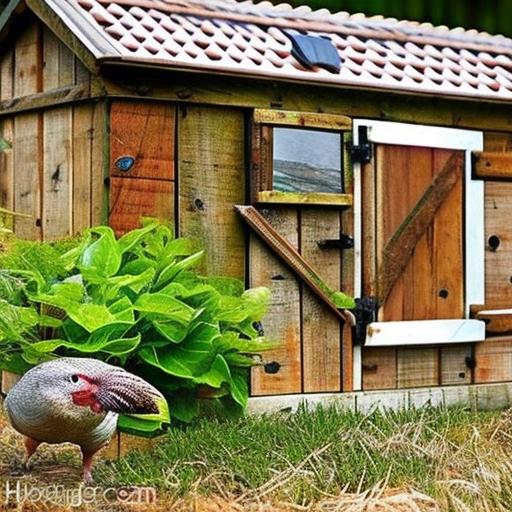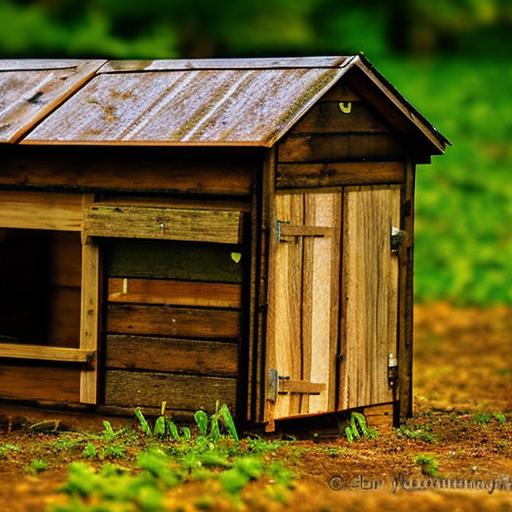Do you dream of having your own flock of chickens, providing you with fresh eggs every morning? Before you start building your chicken coop, you might be wondering, “how big of a chicken coop do I actually need?” in this article, we will explore the factors that determine the size of your chicken coop and help you determine the perfect size for your feathered friends.
Table of Contents
Determining the Optimal Size of Your Chicken Coop
When it comes to , there are several factors to consider to ensure your feathered friends have enough space to thrive. One significant factor to consider is the number of chickens you plan to have. Each chicken should have at least 4 square feet of space in the coop to prevent overcrowding and ensure they have enough room to move around comfortably.
Additionally, it’s essential to take into account the size of the run attached to the coop. Chickens need space to roam and forage, so a general rule of thumb is to provide at least 10 square feet of outdoor space per chicken. This will allow them to stretch their wings, scratch for bugs, and get some much-needed exercise. By providing ample space both inside the coop and in the run, you can ensure that your chickens are happy, healthy, and productive.
Factors to Consider When Calculating Chicken Coop Size
When calculating the size of your chicken coop, there are several important factors to take into consideration. One of the key considerations is the number of chickens you plan to keep. Each chicken will need a certain amount of space to move around comfortably and lay eggs. As a general rule of thumb,it is recommended to allow 3-4 square feet of space per chicken inside the coop. Make sure to also account for additional space for nesting boxes and perches.
Another factor to consider is the breed of chickens you have. Some breeds are larger and more active than others, so they may require more space to roam around in the coop. In addition, if you plan to have a run attached to the coop, you will need to factor in enough space for the chickens to have adequate outdoor space to scratch and peck. It is important to provide enough room for your chickens to exhibit natural behaviors and prevent overcrowding,which can lead to stress and health issues.
Benefits of Having a Larger Chicken Coop
Having a larger chicken coop can provide numerous benefits for both you and your feathered friends. One of the main advantages is that a bigger coop allows for more space for your chickens to roam around and stretch their wings. This can help prevent overcrowding and reduce the chances of aggression and pecking within the flock.
Additionally, a larger coop can also make it easier for you to maintain cleanliness and hygiene.With more space, you can set up multiple roosting areas and nesting boxes, which can help reduce the buildup of droppings in one area. This can lead to a healthier living environment for your chickens and make it easier for you to collect eggs and clean the coop regularly.
Expert tips for Designing the Perfect Size Chicken Coop
When it comes to designing the perfect chicken coop, size truly does matter. Here are some expert tips to help you determine the ideal size for your feathered friends:
- Consider the number of chickens: A good rule of thumb is to allow 2-3 square feet of space per chicken inside the coop. This will give them enough room to move around comfortably and avoid overcrowding.
- Plan for future expansion: If you’re thinking about adding more chickens to your flock in the future, it’s a good idea to build a coop that can accommodate future growth. adding a few extra square feet now can save you the hassle of building a new coop later on.
| Number of Chickens | Minimum Coop Size (Square Feet) |
|---|---|
| 1-3 | 6-9 |
| 4-6 | 12-18 |
Q&A
Q: How big of a chicken coop do I need?
A: The size of your chicken coop will depend on how many chickens you have and the amount of space they need to roam and lay eggs comfortably. Generally, you should allow for at least 2-3 square feet of space per chicken inside the coop and 8-10 square feet of space per chicken in the outdoor run.
Q: How do I determine the appropriate size for my chicken coop?
A: Consider the size and breed of your chickens, as well as how much time they will be spending inside the coop versus the outdoor run. It’s also critically important to factor in space for nesting boxes, roosting bars, and feeders/waterers.
Q: What are the advantages of having a larger chicken coop?
A: A larger chicken coop allows for more space and ventilation, which can help prevent overcrowding and reduce the risk of disease. It also gives your chickens more room to exercise and socialize,leading to happier and healthier birds.
Q: Are there any downsides to having a larger chicken coop?
A: Larger chicken coops may require more maintenance and cleaning, as well as potentially costing more to build or purchase. However, the benefits of a spacious coop typically outweigh thes drawbacks.
Q: Can I expand my chicken coop in the future if I start with a smaller one?
A: Yes, you can always add on to your existing coop or build a separate extension if you find that your current setup is too small for your growing flock. Just be sure to plan ahead and leave space for expansion when designing your coop.
Closing Remarks
determining the size of your chicken coop is essential for the health and well-being of your feathered friends. By considering factors such as breed, number of birds, and available space, you can create a cozy and spacious home for your flock. Remember, a happy chicken makes for a happy farmer! So go ahead and start planning your perfect coop today. Happy farming!
Meet Walter, the feathered-friend fanatic of Florida! Nestled in the sunshine state, Walter struts through life with his feathered companions, clucking his way to happiness. With a coop that’s fancier than a five-star hotel, he’s the Don Juan of the chicken world. When he’s not teaching his hens to do the cha-cha, you’ll find him in a heated debate with his prized rooster, Sir Clucks-a-Lot. Walter’s poultry passion is no yolk; he’s the sunny-side-up guy you never knew you needed in your flock of friends!






